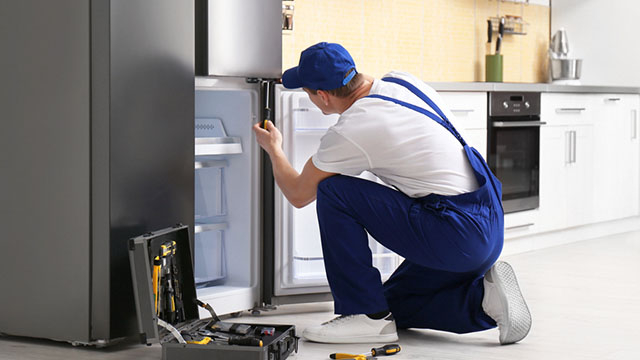Refrigerators are among the most essential appliances in the kitchen, and when they start to overheat, it can be both concerning and inconvenient. For GE Profile refrigerator owners, an overheating unit could mean higher energy bills, spoiled food, and even potential safety hazards. Let’s dive into why a refrigerator overheating problem occurs, what causes it, and practical solutions to keep your GE Profile fridge in excellent working condition. Why Do GE Profile Refrigerators Overheat? Refrigerators are designed to remove heat from inside the unit, but sometimes the process doesn’t work as intended. When your GE Profile refrigerator overheats, it may signal an issue with the cooling or electrical components, airflow, or maintenance habits. Understanding the common causes of overheating can help you prevent potential breakdowns and keep your appliance in top shape. Common Causes of Refrigerator Overheating Below are some of the most typical reasons why a refrigerator overheating problem might arise in a GE Profile model: Dirty Condenser Coils The condenser coils, usually located at the back or bottom of your refrigerator, help release heat. Over time, they gather dust and grime, which can reduce their effectiveness. When the coils are covered in dirt, the refrigerator has to work harder to cool down, leading to excessive heat. Cleaning these coils regularly is crucial to prevent overheating. Blocked Air Vents Air circulation is essential for keeping your fridge cool. When vents inside the refrigerator are blocked by food items or containers, air can’t flow freely. This restricted airflow can cause your refrigerator to overheat as it tries to maintain the right temperature. Keeping air vents clear allows your GE Profile refrigerator to operate efficiently. Faulty Thermostat or Temperature Control A malfunctioning thermostat or temperature control can lead to a refrigerator overheating problem. If the thermostat fails to detect the internal temperature correctly, it won’t signal the compressor to turn on and off as needed. In turn, this can cause the fridge to overheat or run continuously, leading to high energy use and potential damage to internal components. Compressor and Motor Issues The compressor is the heart of the refrigeration system, responsible for circulating refrigerant and maintaining the desired temperature. A faulty compressor or a motor running continuously may overheat, leading to excess heat around your refrigerator. Compressor issues are common in older units and require professional repair. Inadequate Ventilation Space Refrigerators need adequate ventilation to prevent overheating. When your GE Profile refrigerator is installed too close to walls or cabinets, it may struggle to dissipate heat effectively. Make sure there’s enough space—generally a few inches—around the fridge for proper airflow. Signs Your Refrigerator is Overheating An overheating refrigerator doesn’t always come with clear warning signs, but you might notice a few tell-tale symptoms: Warm Exterior Panels: If the sides or back of the fridge feel unusually hot, this could indicate an overheating problem. Loud Noises: A struggling compressor or fan may produce loud sounds, a common sign of overheating. Warm Food: When your fridge’s internal temperature rises, food may feel warmer than usual, indicating cooling issues. Higher Energy Bills: An overheating refrigerator works harder and consumes more energy, which may be reflected in your electricity bill.









